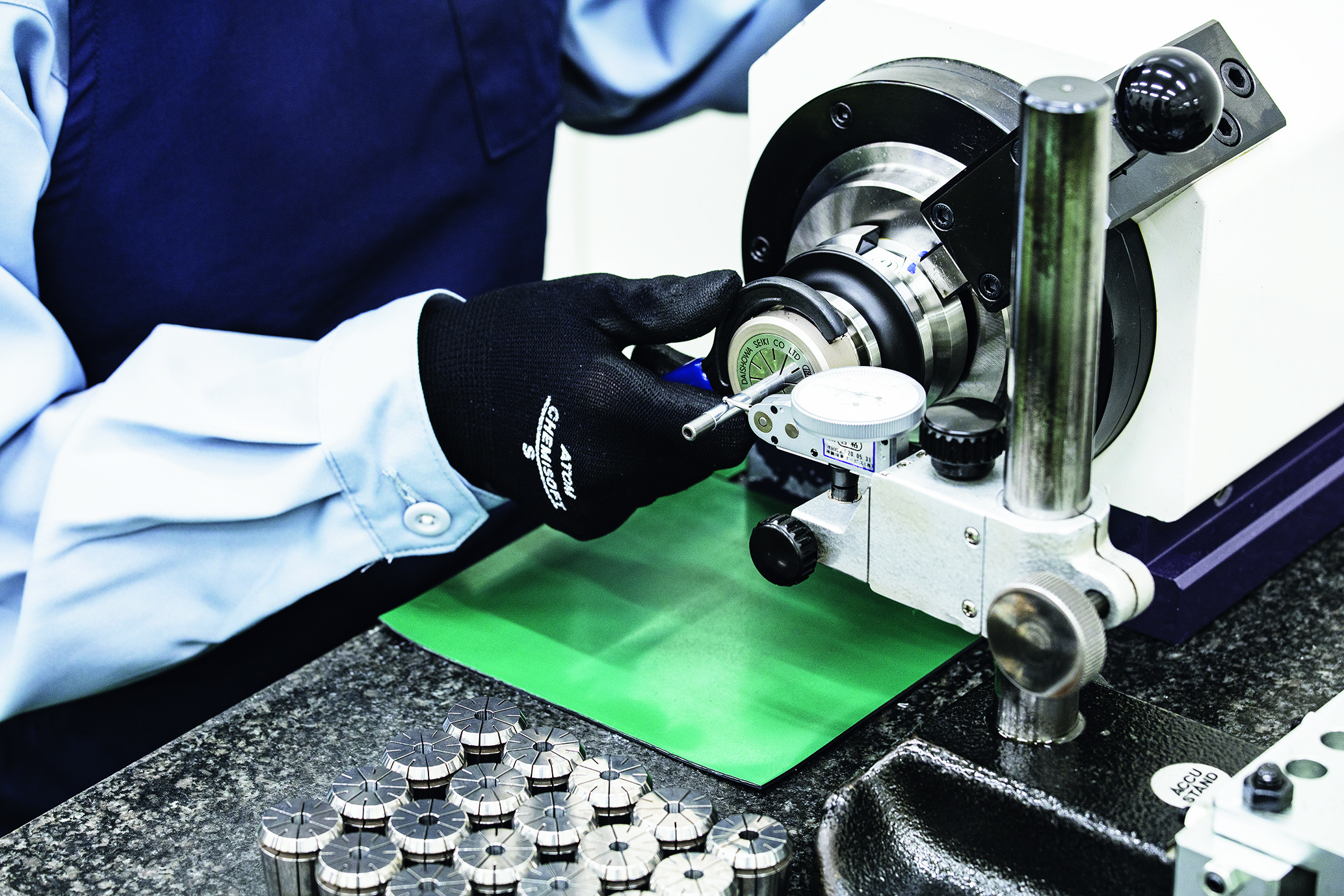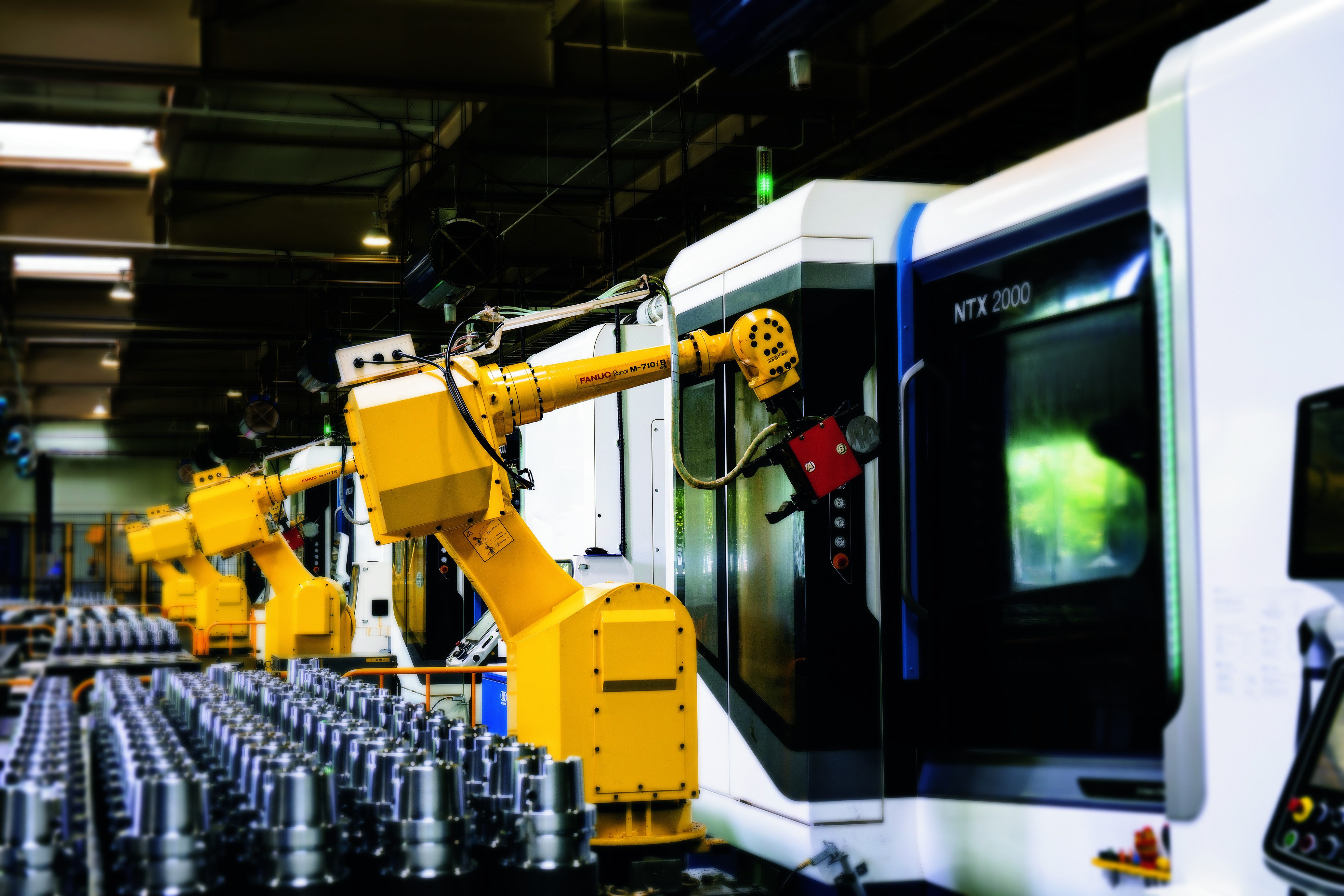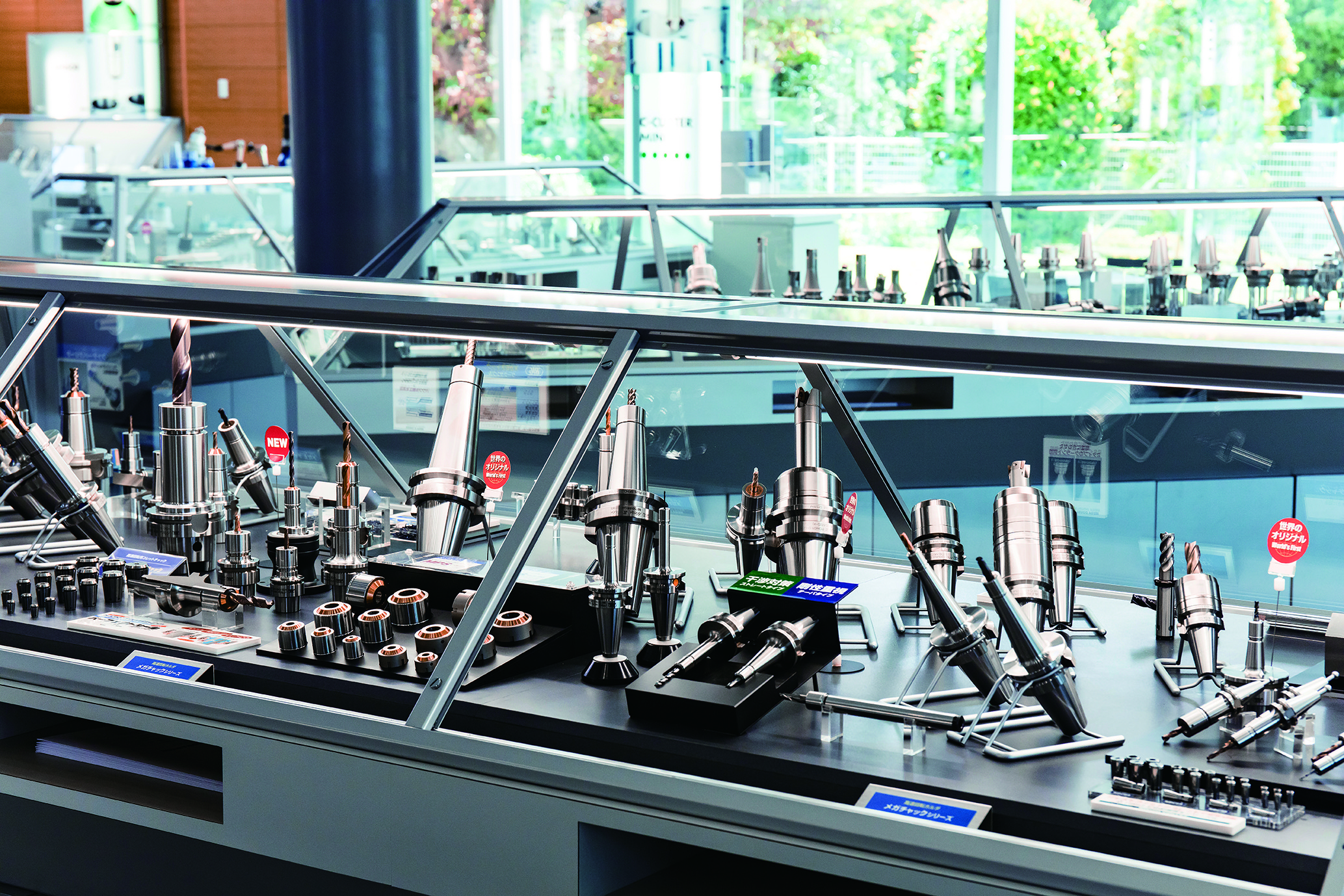Making chips – going beyond promises - BIG KAISER Präzisionswerkzeuge | BIG KAISER
Making chips – going beyond promises
Article by Daniela Tommasi - excerpt from Macchine Utensili, November 2019
Though it may be true that "chips aren't made from words alone," it is also true that the right words, backed up with actions and verified results, can and do make them better. With this in mind, in 2019 BIG KAISER organized a tour in Japan to see a number of production plants firsthand and to discover how the “words” (and products) that imply successful machining processes are created and backed by action.

When lofty claims are supported by verified, tangible procedures, then noble words such as quality, repeatability, guaranteed products and processes are no longer mere clichés. Throughout the entire process, words remain in line with reality; chips are made the proper way, from the initial planning, design and production of the tool or equipment to on-site testing at the customer's premises.
So where does one start? Quite simply, from a concept that today is considered somewhat antiquated: old-fashioned respect. Respect for the customer and respect for attention to detail. This type of respect is characterized by a deep awareness of the many requirements demanded in precision manufacturing, and then meeting and exceeding them through careful, thoughtful design and production. Is this really an outdated approach? Even though it might appear somewhat archaic, a visit to the production sites and logistics center demonstrates the meticulous care and attention that is paid not only to production but also to inspection and shipping.
So much more than full automation
"Our products are used in the production of precision devices such as PCs and smartphones as well as in a wide range of components for the automotive, aerospace, marine and medical/healthcare industries," explains Takuya Ichii, chief business development officer at BIG KAISER. "Our solutions are implemented throughout various industries around the world, allowing us to say with absolute certainty that we are contributing positively to the development of society. This is one of the key reasons why we are so focused on delivering high quality and high precision and why we are dedicated to delivering on our promises with the utmost care and attention, even when machining operations require micron accuracy."

BIG DAISHOWA production sites in Awaji, Japan, take full advantage of state-of-the-art automation, utilizing machine tool-to-tool connections and robotics working, often autonomously, in unison 24 hours a day, while adhering to high-precision standards. The highest degree of automation, which comes into its own in high-volume mass production, allows the operator to preside over and supervise several machines, though usually no more than four at a time.
The product portfolio of BIG KAISER and BIG DAISHOWA includes more than 20,000 precision tools such as boring heads, tool holders, measuring equipment and clamping systems that meet the most stringent quality requirements. The standard range is then supplemented by a range of special products that cannot be mass-produced on automated equipment. The Osaka production site is dedicated specifically to flexible production, for example, special products made with its hallmark precision, care and passion.
BIG DAISHOWA and BIG KAISER: A history of collaboration
Mutually advantageous collaboration between BIG DAISHOWA and BIG KAISER began in the 1980s with the two companies finally merging in 2015. BIG DAISHOWA gained BIG KAISER's expertise in boring tools, while BIG KAISER acquired BIG DAISHOWA's technological know-how in tool holders – a perfect match!
"Our two companies are a perfect match. We can develop and manufacture new state-of-the-art products that meet and exceed the needs of the global market," explains Yasuhiro Uchida, head of R&D and production and member of the BIG DAISHOWA management board. "We organize regular research and development meetings in Switzerland and Japan in order to exchange ideas and opinions on future trends and opportunities. At these events, we also exchange specific development requests, for example, Japan receives requests from Europe and the USA, and vice-versa. This is done to drive the development of new products, even for specific markets. We also usually undertake business exchange programs."
Ideas are turned into words, words become actions, and actions become reality in the form of new projects and products. The company is dedicated to finding optimal solutions and delivering them to customers with a personal commitment to installing truly efficient, leading-edge solutions.
"Our products attain exceptionally high standards and deliver measurable performance benefits. Each of our products is designed to strict standards and manufactured with materials and workmanship that guarantee superior performance. Our goal is to offer premium quality products that are best in the market. Precision is the key aspect demanded by our customers and, consequently, ranks as our top priority," emphasizes Kazuya Adachi, head of sales & export and member of the management board of BIG DAISHOWA, "We firmly believe in our products, in their precision and outstanding quality – we go beyond words, we invite companies to test our products at their facility and let them decide."

The challenge of an ever-changing market
In analyzing the market situation, Yasuhiro Uchida emphasized that there is a noticeable and growing demand for small and medium-sized machines, while demand for larger machines is declining. The same applies to tool holders and cutting tools. "From our perspective, it is necessary to continuously provide even greater precision. An example of this market trend is clearly visible in the automotive sector. In order to extend the battery life of electric vehicles, new cooling systems have been developed, which have complicated shapes with small holes and, therefore, require high-precision tools. Of course, we welcome this trend because high precision has always been the strength of both BIG DAISHOWA and BIG KAISER."
Thinking critically about the actual challenges faced in today's market leads to the realization that there are so many technologies available today that substantial innovation is becoming increasingly difficult to attain. What does this mean?
"The technological challenge that we are faced with is to constantly improve the level of precision of our products. This is crucial because if we stop producing the highest quality market-leading products, it's game over," stress Yasuhiro Uchida and Kazuya Adachi.
"In Japan, our share in the tool holder market is now around 50% and in Southeast Asia (excluding India) it is almost 50%. In Switzerland, our share of the boring tool market is around 50%. Nevertheless, many companies throughout the rest of Europe are still unfamiliar with our products and we want to increase our penetration in this market by offering high-performance and extremely precise solutions. We want these companies to test our products in their operations, and let the results speak for themselves. For us, our key technological challenge and strength remains precision. From the business point of view, we need to increase our footprint. We have a lot to offer, and we can prove it."
A much-discussed topic is an interconnection of machines in production with data acquisition and management, namely industrial IoT, which is quickly becoming dominant and disrupting established mindsets. If one were to consider the machine tool, the tool holder and all the equipment as comprising a single system, the question then for BIG DAISHOWA and BIG KAISER becomes: how will the Internet of Things transform the market? While it is always difficult to predict the future, certain trends and indications are more than evident.
In regards to current communication protocols, the technical team at BIG DAISHOWA and BIG KAISER view the industry mainstay Bluetooth as inadequate for handling the ever-increasing volumes of data. Bluetooth is more than sufficient for simple communications between the sensor of an instrument and a receiver, however, for more demanding communications between the receiver and the machine tool, a new solution will need to be determined as there is still no industry standard – this is a key step.
"Today, the tool holder communicates with the machine via our Factory Manager system: this system is used at Production Site No. 2, in Awaji," explains Yasuhiro Uchida. "In the future, the tool holder will have to provide real-time data for parameters such as the vibration level of the cutting tool, the balance of the tool holder and various cutting conditions. It will essentially have to become smart. In our opinion, this will become the key characteristic of future tool holder development. We are currently developing new products with integrated sensors for communicating with measuring tools. Our latest product, Dyna-Vision, which is currently not yet available for the European market, measures tool profiles using an M2M communication protocol. To meet our customers' growing demands for more accurate data, we need to improve the communication between the machines and the sensor to provide more profiling data. In our opinion, the next big step in the development of the Internet of Things will be the communication systems between the measuring instruments and the machines to enable appropriate corrections to be made automatically and promptly when an inconsistency with the design specification arises."
BIG-PLUS, the one and only spindle system enabling dual-contact
The BIG-PLUS tool holder system is now used extensively worldwide and has been adopted by more than 200 machine tool manufacturers and installed for tens of thousands of tasks. What makes BIG-PLUS so popular? Simply – the simultaneous taper/flange contact design that ensures unique rigidity.
"We started standardizing BIG-PLUS back in 1992 to meet the demand for higher machine spindle speeds. It was then the best solution for high-speed spindles. We identified a need for greater interchangeability between existing conventional spindles. Today, over 175 companies are licensees of the BIG-PLUS system, and more are being added all the time," points out Kazuya Adachi.
The key difference between this system and other dual-contact tool holders on the market lies in how dual contact is achieved: with BIG-PLUS this is achieved through strict control of the position of the flange face and the gauge line, i.e. the origin line of the taper part. This means that, compared to traditional conical tool holders, which rest on a reference diameter (gauge), BIG-PLUS rests on the face of the flange, resulting in a considerable increase in rigidity.
The advantages this brings are considerable, including:
• Improved surface finish and dimensional accuracy
• Increased cutting tool life
• Prevention of micro-vibration corrosion caused by partial cone contact
• Improved ATC repeatability
• Elimination of Z-axial movements at high speeds
• Improved roundness in boring operations
• Increased rigidity during deep boring
